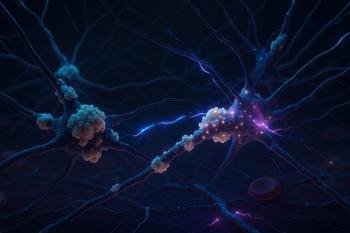
Novel PDE10A Inhibitor for Acute Schizophrenia Exacerbation Presented at APA Annual Meeting
Key Takeaways
- CPL’36, a PDE10A inhibitor, showed significant improvements in PANSS scores in a phase 2 study for acute schizophrenia exacerbation.
- The study involved 189 patients, with 20 mg and 40 mg doses of CPL’36 showing notable efficacy compared to placebo.
Promising results from a phase 2 study of CPL'36, a novel PDE10A inhibitor, for acute schizophrenia exacerbation was presented at the APA annual meeting.
CONFERENCE REPORTER
Researchers presented promising data for CPL’36, a phosphodiesterase 10A (PDE10A) inhibitor intended to treat acute
Jazwiec et al presented data from a double-blind, randomized, placebo controlled, parallel group phase 2 study (
Participants (N=189) included patients with acute exacerbation of schizophrenia. Baseline severity as measured by the PANSS was severe and moderate to severe, with a PANSS total score of approximately 106. Patients were randomized at an equal ratio (1:1:1) to either one of the active doses20 mg CPL’36 or 40 mg CPL’36) or the placebo. All doses were administered once daily for 28 consecutive days.
At 4 weeks, Jazwiec et al found improvement across all the studied PANSS scores. Specifically, patients receiving the 20 mg dose realized a 3.7 unit improvement from baseline (LS mean difference from placebo, p<0.001, Cohen’s d: 0.73) on the positive PANSS subscale score, while those participants in the 40 mg dose realized a 6.3 unit reduction (LS Mean difference from placebo, p<0.001, Cohen’s d: 1.38).
Larger reductions were found on the total PANSS score at week 4 of treatment. Jazwiec and colleagues recorded a 9.7 unit reduction from baseline for those patients who receives the 20 mg dose of CPL’36 when compared with placebo (LS mean difference from placebo, p<0.001, Cohen’s d: 0.77). Those who received the 40 mg dose demonstrated a 16.4 unit reduction (LS mean difference from placebo, p<0.001, Cohen’s d: 1.47).
The investigators also noted 2.6 unit reductions on the negative PANSS subscale score at week 4 of treatment for the participants who received the 40 mg dose of CPL’36 (LS mean difference from placebo, p<0.001, Cohen’s d: -0.968).
Overall, CPL’36 appeared to have a good safety profile. “Drug tolerability was favorable with most treatment emergent adverse events characterized as mild,” the researchers noted.1
Preclinical data for CPL’36 has been positive, which inspired further investigation. For example, CPL’36 demonstrated efficacy in animal models of psychotic and neuromotor disorders. Similarly, it has demonstrated good tolerability, safety, and linear pharmacokinetics in a phase 1 study.
A member of the phosphodiesterase family that hydrolyzes cAMP and cGMP, PDE10A is highly expressed in striatal medium spiny neurons. “Inhibition of PDE10A can modulate medium spiny neurons activity and has potential as a treatment for various forms of psychosis,” the investigators wrote.1
“CPL’36 demonstrated beneficial effects across multiple aspects of schizophrenia pathophysiology, Jazwiecz and colleagues wrote. “These encouraging results support the continued development of CPL'36 as a drug candidate for the treatment of psychotic disorders.”1
References
1. Jazwiec R, Rudzki P, Wieczorek et al. Cpl’36 Pde10a inhibitor is highly effective in the treatment of acute exacerbations from a phase 2 clinical trial. Presented at the American Psychiatric Association Annual Meeting; May 17-21, 2025; Los Angeles, California.
2. Efficacy, Safety and Pharmacokinetics Study of CPL500036 (PDE10A Inhibitor) in Patients With Schizophrenia. Accessed May 18, 2025.July 11, 2024.
Newsletter
Receive trusted psychiatric news, expert analysis, and clinical insights — subscribe today to support your practice and your patients.











